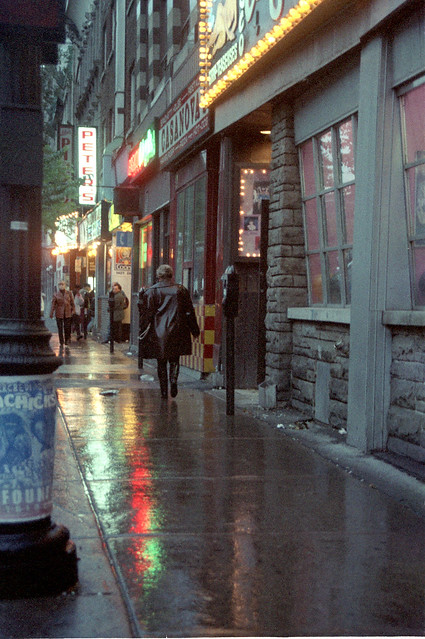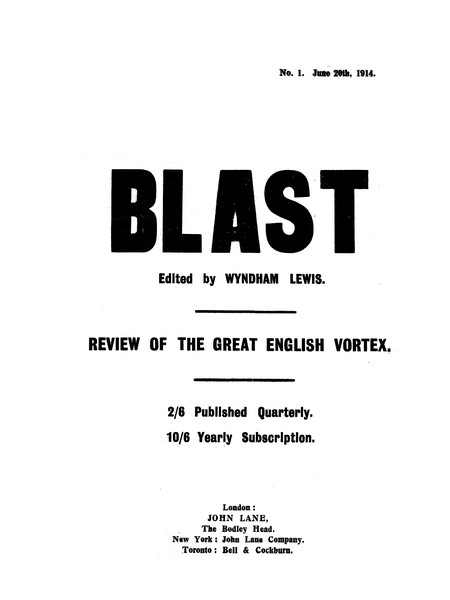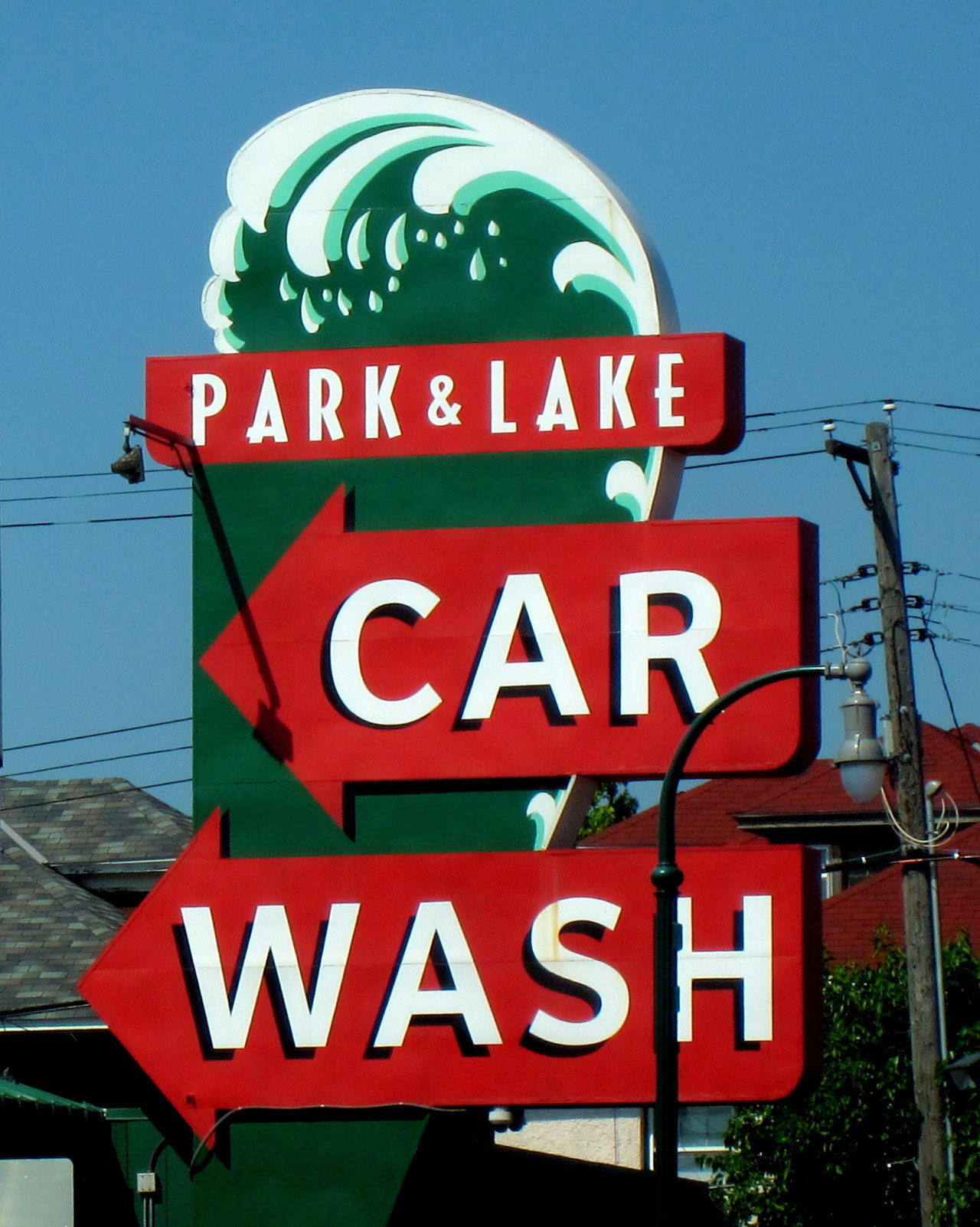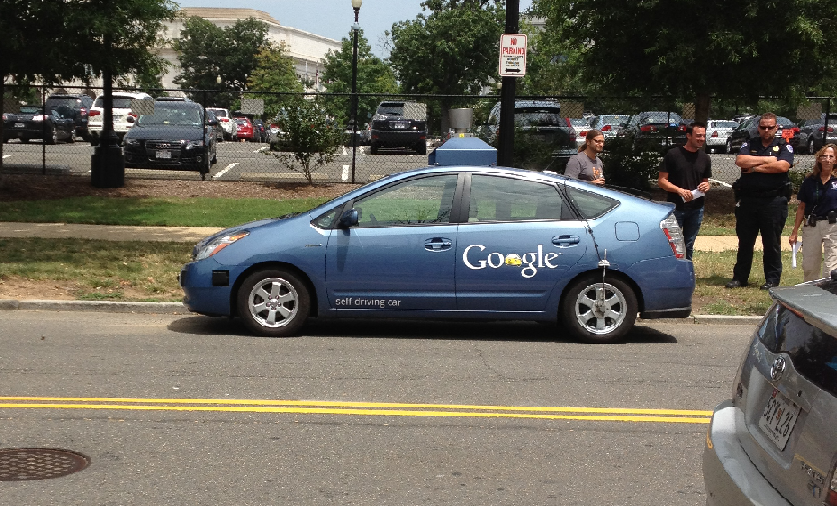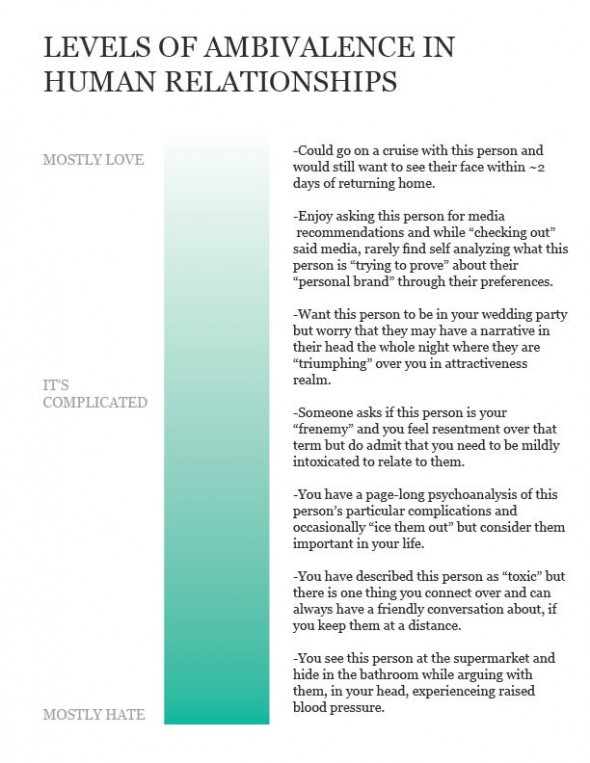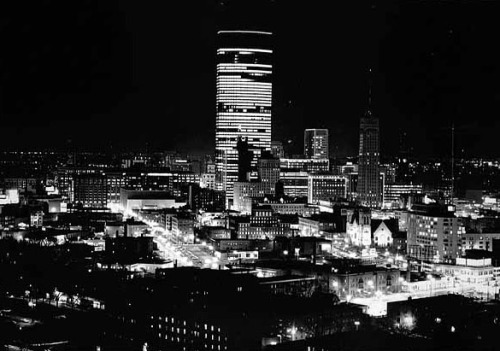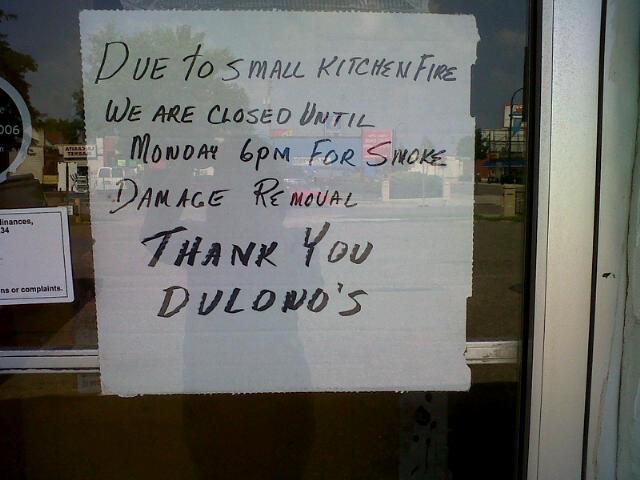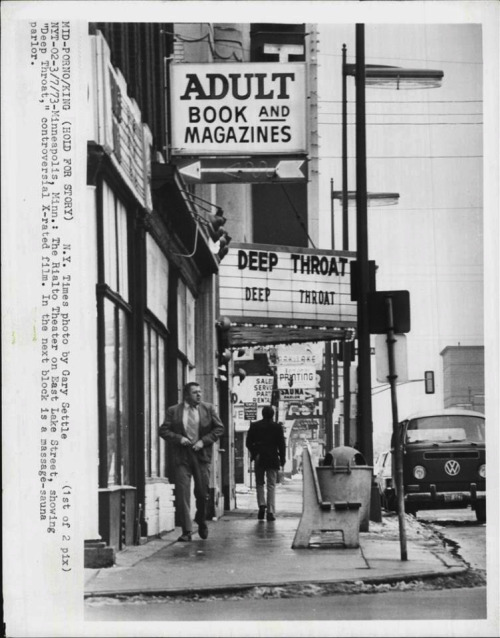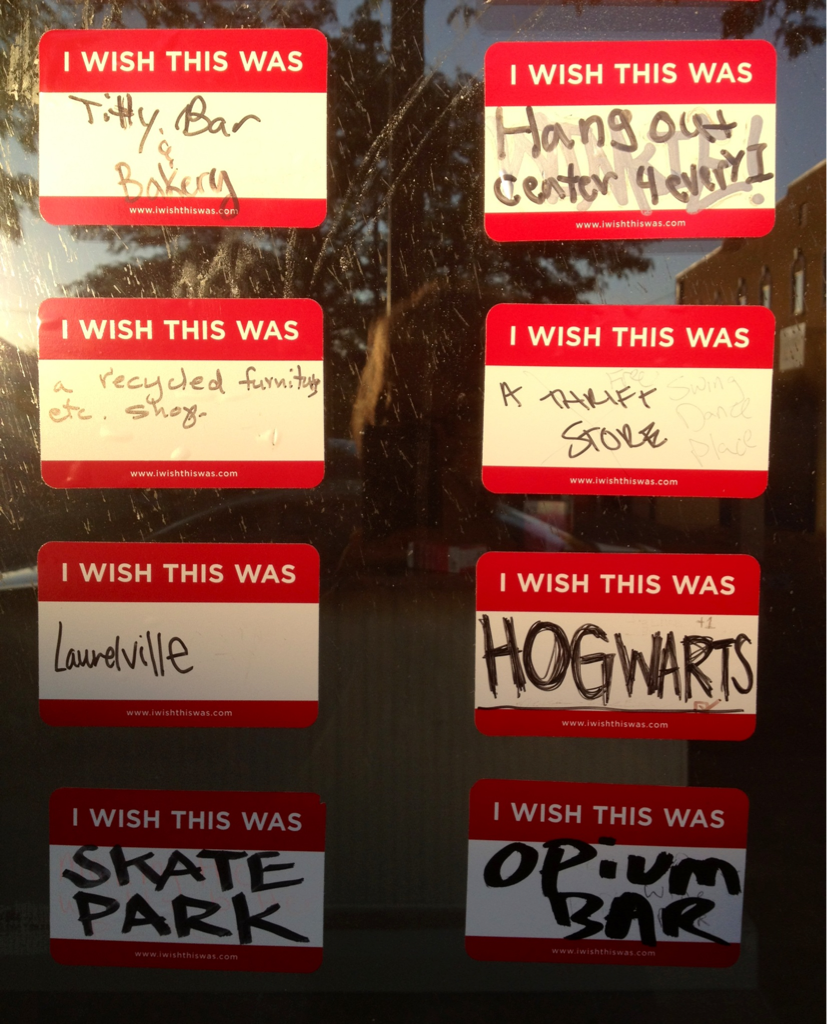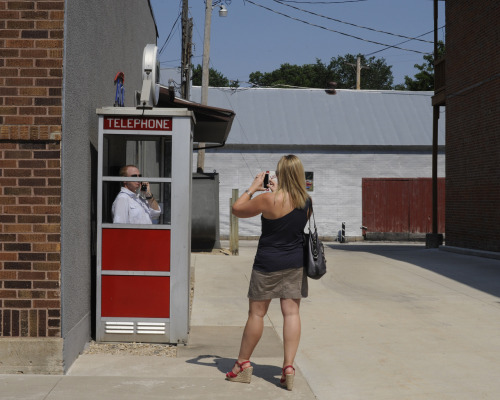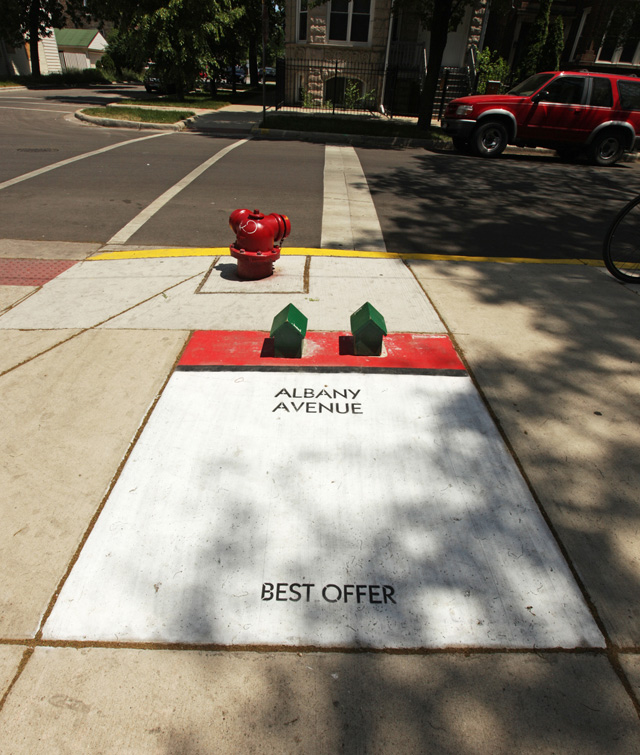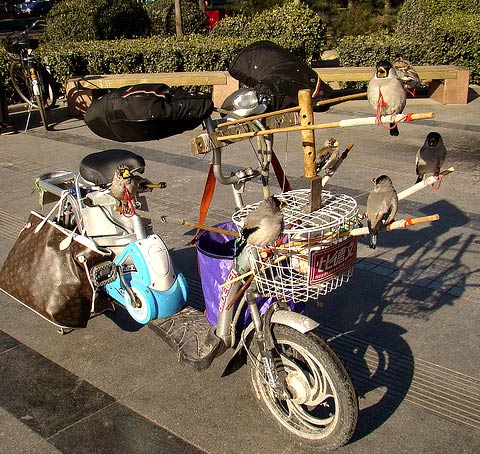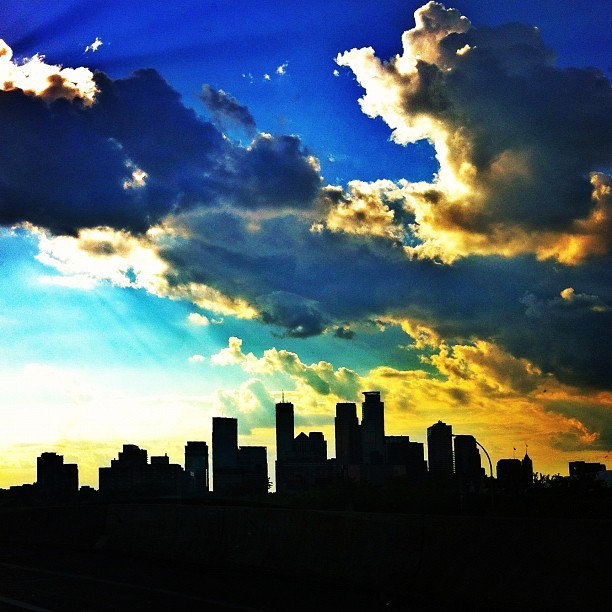[WARNING: If running for your life, always look both ways before crossing the street.]
 |
| ["Franklyn Cater": NPR reporter or Thomas Pynchon character?] |
Not too long ago, in our nation’s capital, Washington DC, Franklyn Cater was having a bad day. As a reporter for noteworthy semi-quasi-public national news network National Public Radio, he had to come up with ideas for news on an exhaustingly regular basis. But after years of living in Washington DC (our nation’s capital) and doing stories on LEED certified buildings, he was tired and out of ideas. He had a deadline to meet, and nothing to show for it.
“Darn it!” Franklyn Cater yelled at his 2012 Collie-of-the-month wall calendar before forcefully placing his almost clenched hand upon his antique milkbottle collectors mousepad. “Where am I supposed to get ideas?”
Franklyn Cater wheeled his chair away his desk and began to pace. Semi-furiously he walked back and forth in an ellipse until also amusingly-named NPR colleague Cory Flintoff told him to cut it out. With purpose, Franklyn Cater strode down the hallway and turned to face the window of the NPR headquarters in Washington DC (our nation’s capital). “Darn it all!” he repeated purposefully.
That’s when Franklyn Cater noticed something he’d never noticed before. As he gazed out out at the vast city around him, Washington DC (our nation’s capital), Franklyn Cater realized that everywhere he looked cars were stuck in traffic. So many cars! He squinted his light brown eyes to see more clearly the faces of the drivers. They looked angry, Franklyn Cater thought to himself. Yes, they looked sad. They looked angry and sad, thought Franklyn, in that way that depressed people look angry and sad, where that you can tell that the anger and sadness is not just an fleeting emotional peak but rather a consistent and erosive anger and sadness, a deep pathos made all the more poignant by its everyday attrition of joy so that the intensity of feeling is almost entirely offset by its continuity and one’s emotional register is amputated by timelessness such that one's sadness assumes a haunting aura that can only be similar to how you imagine a phantom limb feels.
“Oh my gosh,” Franklyn Cater muttered imperceptibly to himself. “People hate being stuck in traffic.” Nobody noticed Franklyn Cater dancing the world’s smallest jig. “I’ll do a story about how pissed off they are,” he thought. “I bet that’s a doozy!”
And so the
#WARONCARS media frame was born.
As it turns out, the great thing about doing a story about how people hate being stuck in traffic is that, because the #WARONCARS is all around us everywhere, you don’t have to do any actual reporting. It’s not like you have to go out and interview people on the bumper-to-bumper beltway. Instead, you can just browse around on the internet.
 |
| [You don't learn how to do this until the second year of J-school.] |
For example, in this case Franklyn Cater went to Bing (his favorite search engine) and typed “cars” and “traffic.” Voila, Franklyn's suspicions were confirmed! Angry sad people exist not only in Washington DC (our nation’s capital) but everywhere, in cities such as Seattle, Chicago, Toronto and Boston.
Franklyn Cater had his lede:
In cities such as Seattle, Chicago, Toronto and Boston, some people go so far as to claim there is a "war on cars."
Thank goodness for “some people.” It turns out the internet is full of bitter people ranting about traffic. I’m sure you’re wondering, who are the “some people” referred to in the article?
Meet Lon Anderson, regional media representative for the
American Automobile Association, a historically popular institution that makes money by catering to car drivers' insecurities. Clearly, this is a well-informed expert. How do we know? Because he has been published by the media.
Lon Anderson, chief spokesman for AAA Mid-Atlantic, wrote an op-ed in 2010 about what he called a "war on drivers" in Washington. He says he sees it in the more than 1.6 million parking tickets issued annually in the city, not to mention increasing automated enforcement, red light cameras and speed cameras.
Good point, Lon Anderson of the mid-Atlantic branch of the American Automobile Association. It’s not like we’d want people driving cars to do things like "drive the speed limit" or "pay for parking." The next thing you know, evil government fascists will force people to get “licenses.” (Not in my America! These colors don’t run.)
Surely a city enforcing its laws concerning the movement of the automobile requires some kind of superlative suggesting extreme violence. If only there were an appropriate metaphor, you know, something properly connoting the stakes of the issue, something that captures the way that “government officials” (socialists) in their “police cars” (state-sponsored death weapons) hand out “tickets” (new taxes) to people when they don’t put money in “parking meters” (big brother invasive surveillance technology).
 |
| [Burning draft card or parking ticket to protest Vietnam or #WARONCARS.] |
How about "war" as a proper metaphor? I'd go so far as to suggest that war is precisely the correct metaphor because, you know, having to pay for parking your car is just like having shrapnel rip through your leg when a bomb explodes. Because having to wait to make a right turn because a bicyclist is in front of you is just like that
movie about the land mine in Kosovo where the guy is stuck on the land mine and can't move forever or else he'll die. It makes perfect sense because getting a speeding ticket for blowing through a red light is exactly like 623,000 people dying in the
Battle of the Somme.
 |
| [A lot of people don't know that Picasso's Guernica is an elaborate surrealist metaphor depicting people stuck in traffic.] |
Why? Because Lon Anderson, spokesperson for the Mid-Atlantic region of the American Automobile Association, says so. And if you don’t believe Lon Anderson, just continue reading. Expert witnesses abound, for example:
Political consultant and Washington resident Chuck Thies, who has written about what he calls the "war on automobiles" for the Huffington Post, says, ultimately, that war is over resources.
For a moment, ignore the fact that everyone who lives in Washington DC (our nation’s capital) is a “political consultant”, and almost anyone can get published on the Huffington Post (which is an internet blog). You can be sure that "Washington resident Chuck Theis" is a legitimate source who knows a lot about war and is properly using language when metaphorically comparing white stripes on the asphalt to the most extreme form of violence in the history of human civilization because he is knows how to “face the reality.”
Why? Because the war on cars involves “resources,” and resources, as we all know, are "limited." Not only are they limited, but they are “essential to the economy.” Check out this illustrative example:
Some cyclists, and other nonmotorists, may have a negative attitude toward cars. But Thies, a cyclist who for years didn't own a car, says critics need to face the reality: We can't get rid of cars. They're essential to the economy, he says.
"[Cars are] the predominant form of transportation in America. In fact, it's something that we can't live without," Thies says. "When you get a refrigerator delivered ... they don't bring it on a bicycle. ... They bring it in an automobile. It's easy to vilify the automobile, but it's not productive."
Another good point, though Theis does slightly undermine his argument about not being able to “live without” a car by inclusion of the biographical detail that he lived without a car “for years.” (Maybe he was in a coma? You don’t need a car when you’re in a coma.)
 |
| [Apparently, they don't have a #waroncars in China.] |
Theis continues with an impeachable economic argument about refrigerator delivery. (Take that Milton Friedman!) Here's a joke I just heard in the elevator:
Q: Why do all Americans own cars?
A: Refrigerator delivery.
Haha LOL Get it? How could we possibly have a society filled with cooled foodstuffs without cars? How would we deliver fridges to each other?
Oh wait, hold on… I just heard the doorbell ring.
[long pause]
OK, I’m back. I had to get that. It was my refrigerator deliveryman. He comes through the neighborhood every other Thursday delivering refrigerators with his “automobile.” Thank god we live in a completely car-dependent society!
And as it turns out, the #WARONCARS isn’t just about the intractable problem of appliance distribution. Cast your eyes on this terrifying anecdote:
In Boston, a local columnist for The Boston Globe accused the mayor of waging war with a proposal to turn parking spaces into tiny parks called "parklets." Some even accuse the U.S. federal government of waging a war with money that helps cities make these kinds of changes.
Clearly for “some”, the #WARONCARS is getting more sophisticated. Not only are cities dropping parks on unsuspecting urban neighborhoods, but they’ve developed new park technology called “parklets.” In the war on cars, parklets are the analogy for the “bomblets” used by the military, by which I mean cluster bomb munitions that carpet large areas with small explosives that either explode right away and kill you or (even worse) don’t explode and bury themselves in the earth so that decades later farmers in Laos are still getting blown up when they try to plant their crops. I’d say that the only difference between a “parklet” and a “bomblet” is that the bomblet is designed to fly through the air and explode to kill human beings, while a parklet is architectural space intended to invoke pleasant and peaceful feelings.
 |
| [One of these is an unexploded cluster bomb; the other one is a park.] |
As Franklyn Cater, credentialed reporter for one of our nation’s most respected journalistic institutions points out, “cast about North America and in just about any city you'll find heated rhetoric about urban transportation.” Obviously “the government” is “waging a war with money,”
and the only significant difference here is that instead of shooting
cruise missiles that explode to kill people as might occur in a war, in
this case, you’re giving away money. The story even contains a photograph of a bike lane in Washington DC (our nations capital), so that you know the #WARONCARS is really happening. If you zoom in, you can see lots of dead bodies and maimed babies in the background.
 |
| [The #WARONCARS is all around you. Wake up America!] |
The only good thing about the #WARONCARS is that it will make journalists' lives easier, as they’ll never have to do any difficult “framing” of issues again. Never again will heads be scratched while attempting to identify which story will appear above the fold, because now there’s a #WARONCARS right here in the USA in cities such as Boston, Chicago, Toronto and Seattle. Now Americans trapped in traffic jams during rush hour can tune into NPR and hear journalistic radio stories about themselves and how upset they are because they’re in a war involving terrifying 3,000 lb. rapidly moving metal machines that are constantly killing people.
Actually, now that I think about it, maybe it's not an exaggeration to suggest that every city in America is occupied by terrifying 3,000 lb. rapidly moving metal machines that are constantly killing people. The more that I think about it, the more this starts to ring a bell.
Hold on. Let me do some quick research.
 |
| ["Bing" is the sound your car makes when it hits a 12 year old on a bicycle.] |
I just found out some rather astonishing facts! Compare the amount of people who are killed in the #WARONCARS with the number of soldiers who die in the non-metaphorical war in Afghanistan:
290: Total number of pedestrians
killed by cars in New York City in 2008.
295: Total number of US and UK soldiers
killed in the War in Afghanistan in 2008.
Or, check out this comparison between the most protracted war in US history and the death toll from the US automobile and freeway system:
58,902: Total number of US casualties in the
War in Vietnam.*
684,654: Total number of
motor vehicle deaths in the USA from 1963 - 1975.
Maybe the metaphorical use of the term “war” to describe the constant movement of motor vehicles isn’t so far off after all.
* 2,118 Afghani civilians died in the Afghanistan war in 2008 according to the NY Times, which is undoubtedly a lowball estimate.








